A hub of innovation and creativity housing the University of Cambridge, an institution dating back more than 800 years, the city of Cambridge is a hotbed of history, architecture, and heritage.
From spying the splendour of the King’s College Chapel, one of 31 colleges, to visiting the Cambridge University Botanic Garden, there’s no shortage of things to do in Cambridge.
Take a punt on the river Cam to see the renowned Cambridge College Backs and to pass under the Bridge of Sighs, be amazed by art and antiquities in the Fitzwilliam Museum or sample the city’s flourishing food and drink scene. Discover sights designed by famous scholars and find out how a Cambridge visit can create lasting memories.
Cambridge is the perfect destination to spend a relaxing long weekend. Meander around the cobbled streets, stop off for a pastry at the daily market and explore the world-famous University buildings. There’s plenty to keep you busy!
There’s something for everyone in Cambridge and it’s a city that can be visited in all seasons, but I must admit, it looks the prettiest in summertime.
No guide to Cambridge would be complete with mentioning punting! Cambridge is synonymous with punting. You can choose to join a group where you’ll have your own guide (usually a student at the University), this is a nice way to see a little more of the city and find out more about its history.
Spend a couple of hours in one of Cambridge’s most stunning buildings, the Fitzwilliam Museum. This neoclassical building is an architectural dream housing art, antiques and illuminated manuscripts. It’s free to enter and there’s often different exhibitions and events happening too.
You can’t have a guide to Cambridge without mentioning this masterpiece of English craftsmanship. Founded by Henry VI in 1441, this chapel really does take your breath away. Featuring a fan-vault ceiling, stained glass windows and Ruben’s masterpiece. You can book onto a guided tour or if you’d prefer, you can wander around at your own pace.
Although the city’s market is small it’s worth a visit if you’re after an on-the-go snack! You can also find flowers, plants, clothing, records, and jewellery. It can get quite busy at the weekends. During the summer, the market square often hosts outdoor film showings which is very popular with both families and groups of friends.
If you’re visiting in summer, the open-air Shakespeare Festival is great fun! Don’t be surprised if you spot an influx of men in leggings and padded shoulders walking around the city.
Although much is known about Cambridge, little is commonly known about the great city's history. When people hear the name Cambridge, they imagine the impressive historical spires of the University; they think of learning, knowledge and scholarly pursuits. In fact, even when you google ‘Cambridge’ on the internet, the first city that is returned in the search engine is Cambridge Ontario in Canada!
Cambridge, England wasn’t actually founded as a city until 1951, and even then it didn’t have the same extensive history as other English towns. It started as a Roman outpost and went through various rule changes over the years, including Danish, Anglo-Saxon, and Norman rule. However, despite all these challenges, Cambridge continued to grow and prosper over time. Like many other English towns during this time period, it experienced Plague and Fire devastate much of the country at the same time. Nevertheless, Cambridge persevered and has since become one of England's most well-known cities.
Cambridge is more than just a historical city with an internationally renowned University. It's also known for its charming architecture, lively nightlife, and friendly community. The University has played such an important role in the city's history that it can't be omitted from any comprehensive account of Cambridge life.
Cambridge is a historic city with an interesting past. It was a prosperous market town situated fifty miles north of London and named after the river Granta which later became known as the Cam after the town grew up around it. Originally, the river was called the Granta, so Cambridge was first called ‘Granta Brygg’, but it didn't become Cambridge until much later. Because the town had become "Cambridge", people assumed that the river must be called the Cam, and so that's what it became!
Cambridgeshire has stunning architecture and fantastic shops, but it is also a county that is rich in history. Many cobbled streets and roads that you use every day have a interesting history behind them that you may not know about.
We love to tell the forgotten stories of our county's past as so will be looking into the roman history behind King Hedges Road, a road that if you are from Cambridge, you probably use quite often. Even though this road is primarily used for access to the A14 nowadays, it has been around for decades dating all the way back to Roman times.
King Hedges Road is North of Cambridge and gives access to The Science Park, Cambridge College, Orchard Park, Arbury, the A14 and many other places. It is a busy road that is often used for commuters.
King Hedges Road has a rich history and has been around for a long time. In the 13th century the road was known as Albrach. In 1558 it was agreed that Richard Brakyn could enclose all 34 acres of Albrach, following which it was renamed Kings Hedges. The name is believed to have come from the fact that it is on the site of the ancient King's warren, or game preserve, where hedges were grown to direct the animals into areas where the hunters could easily catch or kill them. In the early 1950s a Roman villa was discovered in the area that is now occupied by King Hedges Primary School. Crop marks and excavations in the vicinity have revealed that the villa lay within a large enclosure surrounded by a landscape of fields, farms, and tracks.
A Roman villa was typically a farmhouse or country house built during the time of the Roman Empire, sometimes reaching extravagant proportions. The Roman villa of a wealthy Roman family was often much larger and more comfortable than their city home. They had multiple rooms including servants' quarters, courtyards, baths, pools, storage rooms, exercise rooms, and gardens. They also had modern comforts such as indoor plumbing and heated floors. It is strange to think that there was once one of these extravagant Roman houses right here in Cambridge.
Today King Hedges probably looks very different to what it did in Roman times. Properties in King's Hedges Road had an overall average price of £388,333 over the last year. Many people use this road as an access to the A14 which can take you on the M11 towards London.
Baking is an old tradition for which many Cambridgeshire farmhouses used a long wooden trough. The raising agent most often used was liquid barm, the froth that forms on the top of fermenting malt.
It was also common for bakers to bake home-produced doughs, as well as Sunday dinners, Christmas poultry and cakes that were too large to go into small household ovens. Many recalled seeing housewives and children going round to the bakery after the Sunday morning service with white cloths to cover the newly baked foods.
Poor families might well have to survive on a water mess for breakfast and supper. A thick slice of bread as the base, sprinkled with pepper and salt and then hot water poured over. Milk could be used instead of water if it was available, and even a knob of butter.
Cambridge is famous for its cheese. Two varieties were made up until the 1930s – a white Single Cottenham and a blue-veined Double Cottenham resembling Stilton. Cheese making was started there by a family who had come from Leicestershire where they had made Stilton and who tried the same recipes using local milk.
There was a time when soft milk and cream cheeses known as Cambridge Cheese, Ely Cheese, or Cambridgeshire Cheese could be bought. By the mid-20th century production was confined to the Rathmore dairies in Sutton near Ely.
Breeding of eels in the Fens is well known. They would be boiled or cooked in pies. Edmund Carter in 1753 wrote that the fish days in Cambridge Market Place were Wednesdays and Fridays. Eels were extraordinarily cheap. Salmon and sturgeon would be found sometimes at the market.
One of the strangest stories is that of the cod, caught off King’s Lynn and cut open in the Cambridge market in June 1626. A small book was found inside wrapped in canvas. It was taken, rebound, and sent to the University Library.
There are no characteristic Cambridge desserts but amongst drinks, there were some recipes associated with Christmas festivities in the colleges. A recipe for Cambridge Milk Punch was published in 1856; the base was two quarts of milk flavoured with lemon to which eggs, rum and brandy were added, whisked to a froth, and served in glasses.
Tea was too expensive for poorer families in the 18th and early 19th centuries but after the price fell to 2s a pound from the 1860s, it became more popular. The cheapest sugar – brown, sticky, and lumpy – was used to sweeten it. Packets of tea would be offered as prizes at sports’ meetings. Gunpowder tea was especially popular and a pound of this, as well as a pair of shoes, formed the first prize in a young lads’ race held in Cambridge in 1838 to celebrate the coronation of Queen Victoria.
Cambridge was famous for its beer, and it was traditional to add it to Christmas puddings. Stingo, which used to be brewed in Cambridge, was often added. Many pubs would brew their beers on the premises; one of the last to do this was the Jolly Brewers in Milton.
Villages would have their own Ale Conner whose job was to taste all the beers of the pubs in the village to check for quality. He would be paid 1s per visit. Over had its own Ale Conner as late as 1909.

Address: Rene Court, Coldham’s Rd, Cambridge CB1 3EW, UK
Main Phone: 01223 214446
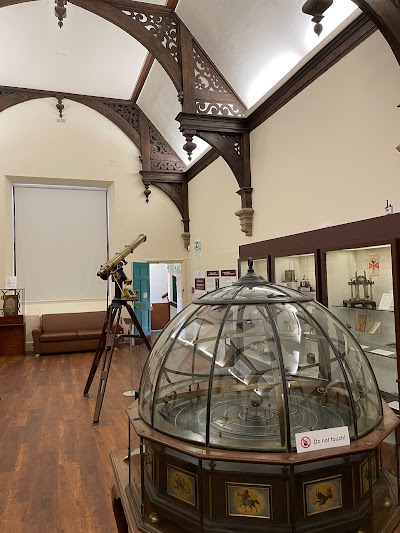
Address: Free School Ln, Cambridge CB2 3RH, UK
Main Phone: 01223 330906
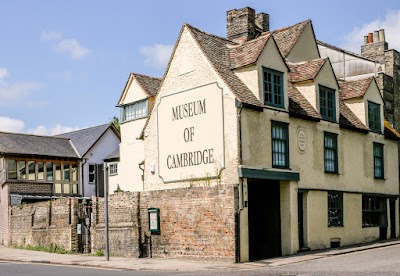
Address: 2-3 Castle St, Cambridge CB3 0AQ, UK
Main Phone: 01223 355159
Cambridge students are always keen to explore the world of university options, and increasingly their research leads them to Asia Pacific. International student numbers had increased significantly across the region. So, what makes Asia Pacific such a popular study destination?
99 of the region’s universities are among the Top 300. Cambridge International qualifications are widely recognised by these universities, making application straightforward. Students can choose from a wide variety of degree courses, with many universities offering teaching entirely in English.
Not only can students choose from an impressive range of courses and institutions, but the region also offers the chance to experience new and exciting cultures, or – for those already living in Asia Pacific – a ‘home from home’ campus experience where life is more familiar. Students can choose to complete their degree in English while learning another language from their destination, such as Chinese, Japanese, or Malay.
The cost of education can be surprisingly affordable, especially when compared to some of the more expensive courses offered worldwide. For students already in the region, staying closer to home can result in significant savings in terms of travel costs and living expenses. For those families feeling the negative economic impact of the pandemic, an affordable route to a high-quality education is an important advantage. Many universities also offer generous scholarships for students, based on need or academic potential.
A degree from an Asia Pacific university really is a passport to a world of opportunity. Firstly, a degree taught in English gives students the linguistic skills they need to work, or continue their studies, in an English-speaking environment – which could be anywhere in the world.
Competition for places in Asia Pacific universities can be high – so what can you do to give yourself the best possible chance of success?
Language skills: If you apply with English language qualifications, such as those from Cambridge International, then your English skills won’t be in doubt, but you may still need to demonstrate a basic knowledge of the local language so plan to factor language lessons into your preparation.
People always associate Cambridge with scarf-wrapped undergraduates punting down the river Cam. However, Cambridge is home to a large private sector comprising of scientific and research companies. It is also home to a sizable public sector workforce since Cambridge is the centre of the county council. These employees often choose short training courses in Cambridge to equip themselves with the latest skills.
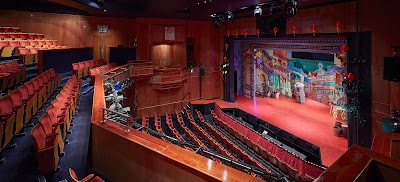
Address: 6 St Edward’s Passage, Cambridge CB2 3PJ, UK
Main Phone: 01223 503333
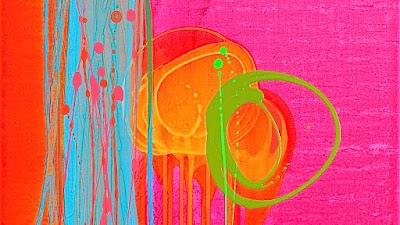
Address: The Studio, 54a Cherry Hinton Rd, Cambridge CB1 7AA, UK
Main Phone: 01223 340299
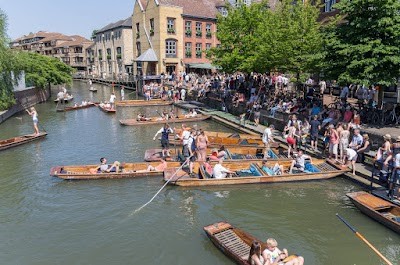
Address: 13, 14 Round Church St, Cambridge CB5 8AD, UK
Main Phone: 01223 341328